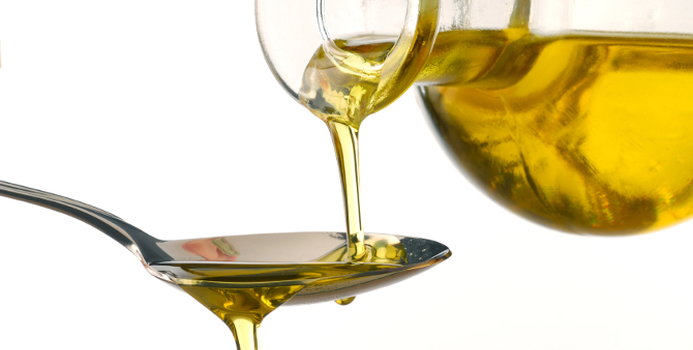Fats are a part of any healthy diet, but it's important to know the difference between polyunsaturated fat and trans fat. The word "fat" generally refers to a chemical substance known as glycerides. These are the basic building blocks of glycerol, and there are as many as 3 units of fatty acids that would normally link to the glycerol backbone. Because of this type of attachment of the fatty acids to glycerol, fats are usually defined as triglycerides.
Polyunsaturated FatsUnsaturated fats, which include polyunsaturated fats, typically come in liquid form, as opposed to saturated fats, which are normally in solid form. Polyunsaturated fats have the general tendency of lowering the body's HDL (good cholesterol) and LDL (bad cholesterol). These fatty acids are in liquid form at room temperature and more than two of its hydrogen atoms are usually not present. Examples of polyunsaturated fats include corn oil, sunflower oil and safflower oil.
While we tend to associate polyunsaturated fats to healthy food, there are two critical exceptions that we have to bear in mind as far as this type of fatty acid is concerned. Several scientific studies have shown that in excessive amounts, polyunsaturated fats can increase the risk of cancer. Another critical issue involving these fats is related to the level of consumption of omega-6 and omega-3 fat. There has been a growing imbalance in our consumption of these two types of polyunsaturated fats, and this condition can contribute to the development of chronic diseases such as diabetes, heart diseases and arthritis.
Trans FatsTrans fats, which are artificially hydrogenated fatty acids, are considered to be dangerous fats. This man-made type of fatty acids are generally intended to enhance the shelf life of food items. These are also included in manufactured food products to enhance texture. Unfortunately, trans fats have the general tendency of raising the level of cholesterol that are usually deposited on the inflamed arteries. This condition is the leading cause of atherosclerosis.
While hydrogenated fats were considered as the better alternative to saturated fats, recent scientific studies have shown that trans fatty acids are actually worse. Although saturated fats raise the level of LDL (bad cholesterol), trans fats also do the same and more. The presence of high levels of tans fats significantly lowers the level of HDL (good cholesterol). It also increases the level of triglycerides in the blood stream, a condition which can lead to serious cardiovascular diseases.
Essential ConsiderationsAs a general rule, you have to carefully study the nutritional facts of the food items that you buy, and go for those that are either free of trans fat or that contain less that ½ gram of trans fat. However, having a food that is high in polyunsaturated fats and low in trans fatty acid does not automatically translate to a healthier food alternative, especially for those who are concerned about their weight. Thus, it is best that you avoid trans fat altogether.



